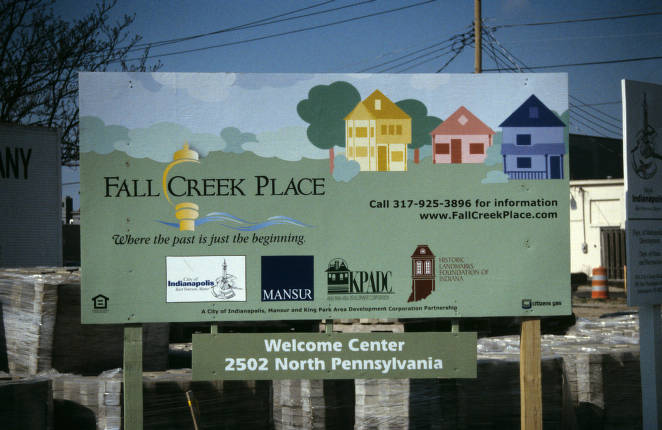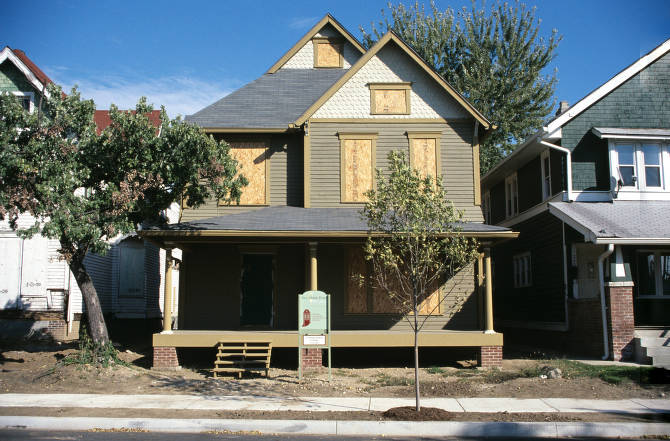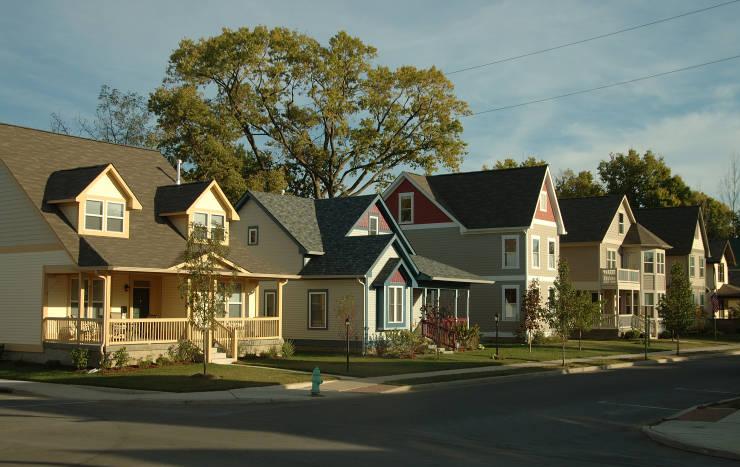Located two miles north of Downtown between 22nd Street and Fall Creek, east of Pennsylvania Street and west of College Avenue, Fall Creek Place was a neighborhood of substantial homes when developed in the late nineteenth century. It consists of narrow, tree-lined streets. Victorian homes from the late 19th century are the most prevalent house type as well as new homes built in period design.

By the 1980s and 1990s, the neighborhood had declined, earning the unflattering sobriquet of “Dodge City” because of the frequent drive-by shootings that occurred there. Entire city blocks of homes were left abandoned.
In 1998, a $4 million Home Ownership Zone (HOZ) Grant from the U.S. Department of Housing and Urban Development (HUD) was procured for the acquisition of vacant homes and lots in addition to rental properties. This allowed the development of Fall Creek Place to move forward as a comprehensive mixed-use, mixed-income initiative of homeownership with 51 percent of the homes targeted to households at or below 80 percent of the city’s median income.

Under the administration of Mayor Bart Peterson, the City of Indianapolis committed $15 million towards infrastructure improvements through a tax increment financing (TIF) bond allowing for new streets, sidewalks, lighting, underground utilities, and tree planting. The city also contributed an additional $3.5 million in Home Investment Partnership (HOME) and Community Development Block Grant (CDBG) funds used primarily for down payment assistance for income-eligible buyers, to help ensure the project achieved its goal of creating a mixed-income neighborhood.
The city’s overall investment yielded over $70 million in total home sales, along with $16 million of private commercial development. Within 10 years from the beginning of revitalization, annual property tax revenue in the neighborhood increased by over $1.2 million per year.

There are more than 400 homes in Fall Creek Place. Two retail nodes on Delaware Street and three neighborhood parks and a new city park also contribute to the neighborhood’s success.
Fall Creek Place is a partnership between The City of Indianapolis and King Park Development Corporation with oversight support provided by . The overall development and construction were managed by Mansur Real Estate Services, with additional design work provided by Rottmann Architects and Kevin K. Parsons & Associates.
The neighborhood has been recognized with many awards for its redevelopment from the American Planning Association (2003), U.S. Department of Housing and Urban Development (2003), Professional Builder and National Association of Home Builders (2004), Urban Land Institute (2004), and National League of Cities (2004), among others.

Help improve this entry
Contribute information, offer corrections, suggest images.
You can also recommend new entries related to this topic.

